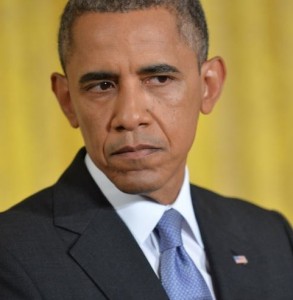The White House held a “Solar Summit” Thursday, continuing to promote subsidies for solar panels just days after a new nonpartisan government report showed restrictions of drilling on federal lands.
The Energy Department announced another $15 million in “solar market pathways” to fund local governments’ use of solar energy. Further, the administration announced at the summit plans for a “Capital Solar Challenge,” directing federal agencies, military bases and other federally subsidized buildings to use solar power.
Solar power took a severe public relations hit after the politically connected California-based Solyndra solar power maker collapsed after getting $600 million from the Department of Energy. But on Thursday, the White House stood firm.
“As part of the president’s all-of-the-above energy strategy, solar energy is helping families and businesses throughout the U.S. access affordable, clean renewable power,” Energy Secretary Ernest Moniz said. “The Energy Department is committed to further driving down the cost of solar energy and supporting innovative community-based programs – creating more jobs, reducing carbon pollution and boosting economic growth.”
But a report by the Congressional Research Service found that “all of the above” might not include a commitment to drilling, despite the administration taking credit for the increased oil and gas production overall despite a big uptick in hydraulic fracturing, or fracking, on private lands.
Oil production has dropped by 6 percent on federal lands and natural gas production has declined by 28 percent with fewer drilling permits from 2009 to 2013. During that same period, fracking helped lead to an increase of 61 percent on private and state-owned property, while gas production increased 33 percent.
The Solar Summit at the White House to promote a product that survives on government subsidies contrasts perfectly with the CRS findings on a product that is “market inspired,” said William Yeatman, a senior fellow with the Competitive Enterprise Institute.
“It is really depressing when you compare government’s posturing on oil and gas, which Americans want, but the Obama administration wants to inhibits, with solar,” Yeatman told TheBlaze. “They are continuing to throw good money money on green energy. They want to prohibit energy that works and subsidize energy that doesn’t work.”
Still administration officials stuck to their guns on the matter.
“Solar is a smart investment,” said Dan Utech, special assistant to the president for energy and climate. “The average cost of solar panels has dropped by more than 60 percent, and the cost for a solar photovoltaic electric system has declined by about 50 percent. The numbers tell an important story: There has never been a time when solar is more affordable and more available to so many Americans. Solar is not just a prospect; it’s a reality.”
Utech pointed out that last week, the U.S. Army announced plans to start solar development in Fort Huachuaca in Arizona, which would be the biggest Defense Department solar project on any military installation.
During the summit, the owners of several solar panel companies were announced as “Champions of Change.”
Throughout the 2012 campaign, and since, President Barack Obama has readily accepted credit for increased drilling.
“The most important thing we can do is to make sure we control our own energy. So here’s what I’ve done since I’ve been president. We have increased oil production to the highest levels in 16 years. Natural gas production is the highest it’s been in decades,” Obama said during the second presidential debate with GOP opponent Mitt Romney in 2012.
Yeatman called this “outrageous and disingenuous.”
“Between the bureaucratic foot dragging and the red tape they have tried to inhibit drilling,” Yeatman said. “Despite the breakthrough in technology, there has been a decrease of production on federal land. It doesn’t make sense unless they are purposefully trying to block drilling.”
The CRS report by Marc Humphries, a specialist in energy policy, said that in 2013 the price of oil averaged $98 per barrel, up from $94 in 2012.
“As a result of recent production increases on non-federal lands, the question is raised whether non-federal lands might regain a more dominant position of roughly 80-85 percent of total U.S. crude oil production,” the report states. “The fact remains, however, that there are 5.3 billion barrels of proved oil reserves located on federal acreage onshore and another 5.6 billion barrels of proved reserves offshore (nearly all in the Gulf of Mexico).”
The report goes on to say that crude oil production on federal lands was generally under 20 percent of production in the 1990s, but then increased to more than 30 percent.
“Non-federal crude oil production has been rapidly increasing in the past few years partly due to favorable geology and the relative ease of leasing from private parties, rising by 2.1 million barrels per day (mbd) between FY2009-FY2013, causing the federal share of total U.S. crude oil production to fall by nearly 11 percent,” the CRS report states.
It later adds, “Natural gas production in the United States overall has dramatically increased each year since 2009, while production on federal lands has declined each year over the same period. Much of the decline can be attributed to offshore production falling by about 50 percent. Onshore production declines were less dramatic.”
. . . . . . . . . . . . . . . .
Fred Lucas is TheBlaze‘s White House correspondent.

